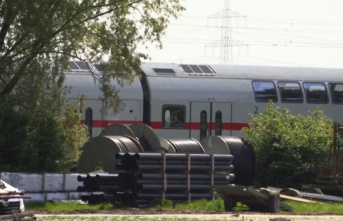The majority of fathers and mothers (99.6%) recognize the importance of transporting a newborn in a rear-facing safety baby carrier or in an approved carrycot, although almost half are unaware of the exceptions in which minors can travel in the front seat. Of course, 9 out of 10 recognize the advantages of the Isofix system, among them, that it facilitates the installation of the baby carrier and the seat and increases safety. And it is that correctly placing a child seat prevents 75% percent of deaths and up to 90% of injuries.
These are conclusions that are shed from the report 'Children's road safety in the car. Do our children always travel safely?' of Fundación Mapfre, which aims to determine if the perception that parents have about the use of child restraint systems corresponds to current recommendations and regulations, as well as to identify safety gaps in the use of CRS from birth to 12 years. And the form has not only been filled out by parents, but by an age group that presumably does not correspond to parents who are CRS users, but rather to grandparents or other figures related to children, who are also users of this type of device and who they are sensitive to the need to make good use of them. It seems clear that in health education strategies carried out from different areas it is important to take into account all the groups potentially involved.
In the case of the CRS, ensure that no child loses their life in a traffic accident without using one of them, an indicator of the DGT Road Safety Strategy 2011-2020, although this strategy must be broader, avoiding, that no minor dies, even using a restraint system, requires a strategy that brings the necessary knowledge to these groups.
This point is of great importance, since children must always travel safely and use CRS, regardless of the distance or travel time. Therefore, knowledge of the importance of using these devices is essential to reach adults who are potentially going to transport children in their vehicles.
Another noteworthy fact in the results is the low percentage of men who have responded to the questionnaire (5.35%). This may be due to its dissemination method, since although social networks are equally accessible by sex, dissemination was carried out through networks linked to professional associations of midwives, the associations themselves and groups linked to them, where the majority of followers are female. This in itself may imply a bias in the information collected on the perception of knowledge of CRS use in men.
The activities carried out in the collaboration agreement between FAME and Fundación MAPFRE are reflected very positively in the response of the study participants regarding the transfer of the newborn, the advantages of the isofix system, when they can travel children facing forward, when you can start using a booster seat with a backrest, when you should change the seat for a larger one, correct adjustment and fastening of the belt and harness.
Some aspects related to the subject have not received a completely satisfactory response, such as the position of the backrest when children travel facing the rear or the recommendation to use a booster seat.
A total of 34.30% of the participants do not know that, when the baby travels facing backwards, the backrest should be placed in an intermediate position, between horizontal and vertical. Despite the fact that 65.70% do know the correct position, this data is relevant and requires greater insistence on the training of CRS users.
On the other hand, the perception of those surveyed regarding the recommendation and mandatory use of the booster seat is wrong. A high percentage (41.16%) believe that the recommendation is until the child measures 135 cm, a height that corresponds to the mandatory use of the device, not with the recommended height, in reality, the recommendation is up to 150 cm or until the belt fits perfectly to the physical conditions of the child. This can give parents a false sense of security by thinking that it is recommended, and not mandatory, to use a booster seat if their child is less than 135 cm, with which they could do without the device, when in fact at this time the use of the CRS is mandatory in order to avoid injuries in the event of an accident. 24.42% declare that they do not know the recommendation regarding the child's height, which does not exclude that they may be aware of the obligation up to 135 cm, or on the contrary, that they are also unaware of this information. Therefore, this is an aspect that must be stressed in training.
Lastly, there are other aspects where answers have been obtained that reflect a significant lack of knowledge of the recommendations on the proper use of CRS, on which training must especially be emphasized.
In the first place, the perception of security that the participants have regarding the safest place to locate the car seat is worrying, since only 38.84% refer to it as the rear seat in the central position. This location is the one that offers the most protection to the child from side impacts as it is the location furthest from the side doors.
At this point, it must be taken into account that most cars do not have isofix anchorages in the central rear seat, but in the side seats. In this case, if the isofix system is to be used, the ideal location would be the rear right seat, as it allows visual contact with the child and provides safer access from the curb to access the seat, both for its installation , such as for the entry and exit of the child from the vehicle. This location of the seat was indicated as the safest by 35.70%, which probably responds to the use of the isofix system in the CRS. However, 18.84% of the participants consider the left lateral position to be safer, 6.05% consider that the position in the rear seats is indifferent, and 0.58% believe that the position in the rear is safer. the front seat. Therefore, this point requires more attention in training.
Another worrying fact is the lack of knowledge, in 8.60% of the cases, about the age of the CRS used by the respondents, and the use of CRS older than 6 years in 5.81%. On the other hand, 57.56% declare that they do not know how many years the SRI must be renewed. There is no conclusive evidence on the duration of CRS and regulation 129 of the European Commission that regulates the homologation of CRS does not require durability tests either. However, it must be taken into account that the state of the child seat will not be the same if it has been stored in its box, and in a cool and dry environment, than if it has been inside the vehicle for several years in a row exposed to factors such as cold, heat or sunlight, which can contribute to the degradation of its elements. Likewise, the use of the device may cause it to lose its functionality due to wear and tear. Given that the CRS are intended to protect children in the event of a collision or sudden braking, it would be reasonable not to use the same device for more than 6 years, always prioritizing the instructions of the car seat manufacturer. Therefore, this aspect requires greater intervention and awareness of CRS users.
Finally, the search for information on CRS is done in reliable media (specialized shop, midwife, hospital) in 55.79% of cases. 30.29% self-taught for this information in the media or the Internet, not knowing what kind of websites are consulted. 7.93% let themselves be advised by friends or relatives.
Finally, there are two topics where ambiguous or contradictory answers have been obtained. On the one hand, what is related to Royal Decree 667/2015, of July 17, which indicates the obligation that the occupants of vehicles with up to nine seats (including the driver) when dealing with minors with height less than or equal to 135 cm, travel in the rear seats using an approved CRS for their size and weight. Said Royal Decree establishes three exceptions in which the child could travel in the front seat with a child seat: when the vehicle does not have rear seats, if all the rear seats are occupied by other minors with an SRI, or if they cannot be installed rear seat restraint systems. The other contradictory issue has to do with how the booster is more protective with a backrest than without a backrest. In both cases, the answers obtained seem to respond more to a misunderstanding of the question than to a lack of knowledge about the subject.
This may be due to the fact that both questions ask for the wrong answer, so despite having gone through a content validation process, the formulation was not entirely clear to the participants.
The safety of children when traveling by car depends, to a large extent, on the proper use of the CRS by the adults with whom they travel, so information and training about these devices is essential. In this sense, the strategies carried out as a result of the collaboration agreement between FAME and Fundación MAPFRE have had positive results. However, the data collected in this study show that it is necessary to continue with the information and training of adults, not only parents, but all groups that can potentially be CRS users in their vehicles. For this, it is essential that all groups have access to this information from reliable sources.
7












